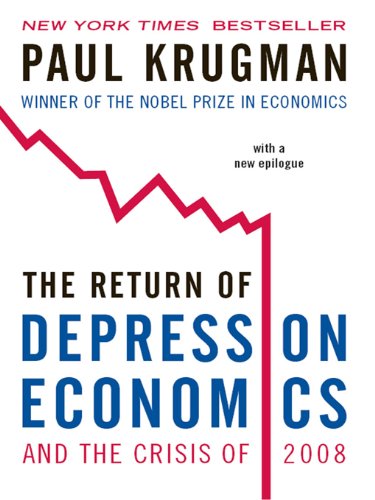Monopoly Capital: An Essay on the American Economic and Social Order, Paul A. Baran and Paul M. Sweezy, Modern Reader Paperbacks, 1968, pp. 401
Although Baran and Sweezy’s Monopoly Capital is over 50 years old, it now remains relevant more than ever. The growing polarity between the haves and the have-nots has led to the world in which 26 richest people own as much wealth as the bottom half of the world’s population, or around 4 billion people. Few giant corporations control the majority of business activity that takes place around the world.
In Marxist parlance, monopoly capital signifies a new form of capital accumulation represented in the form of a giant corporation. Their rise could be dated to the end of the 19th century when they replaced the small family-owned business and concentrated market power in a few units, thereby putting to an end the era of supposedly free competition. In Capital Marx predicted their rise by acknowledging that the free competition among atomistic units, which did not have the power to set their prices and determine outputs, would lead to the concentration of capital as companies accumulate at a faster rate than others, thereby incorporating them within and expanding. This growth, coupled with the rise of financialization and credit, sublated the era of free competition and gave rise to the monopolistic one.
Baran and Sweezy’s work follows a long line of Marxists who sought to analyze this new mode of production. The most prominent of them were, of course, Rudolf Hilferding’s Finance Capital, and Lenin’s Imperialism, the Highest Stage of Capitalism. Others, such as the Polish Marxist Michal Kalecki, fused crisis theory with the works on monopoly capital to arrive at a general law of motion for capital accumulation under monopolistic competition.
By the time Monopoly Capital first appeared in 1966, Paul Baran had already published his Political Economy of Growth, which analyzed the accumulation and production of economic surplus by developed and underdeveloped countries, while Sweezy had his The Theory of Capitalist Development, a defence of Marx’s labour theory of value. Baran was the only tenured Marxist professor in the US, working out of Stanford, while Sweezy left Harvard in 1942 to serve in the military, after which he refused to return. Both, with Leo Huberman, were instrumental in founding and promoting Monthly Review in 1949, a journal that remains the leading voice of the left in the West.
In Monopoly Capital, the authors depart from the mainstream economic theory in that they do not treat the apparent contradictions of capitalist development as an externality to an otherwise perfect system. In abstracting away from the laws of motion of capital, the mainstream economists fail to locate the causes of widespread societal ills in the very system of production. Baran and Sweezy differ in that they see monopoly capital as the direct cause of racism, imperialism, war, and the general irrationality of societies.
They start by analyzing the basic unit of monopoly capital, namely the giant corporation. The basic feature of this unit is the self-perpetuating management group in whose hands rests the control of the company, which aims for and achieves financial independence by generating funds internally and placing them at its disposal. The behaviour of the firm is intrinsic to its structure and fuses the interests of the whole with the interests of the individual. Both exhibit long-term profit-maximizing behaviour and generate economic surplus, which the authors define as “the difference between what a society produces and the costs of producing it,” in clear allusion to the labour theory of value. In monopolistic competition, these surpluses have a tendency to rise, which amends the original Marxist theory, stemming from an analysis of perfect competition, that rested on the tendency of the rate of profit to fall. By abandoning price competition, giant corporations ensure that their profits are maximized.
The crucial argument of Monopoly Capital is based on the idea of surplus absorption. Surplus can be consumed, invested or wasted, and the authors proceed to analyze these different ways of its absorption. The difference between surplus and consumption represents the amount available for investment. As surplus rises, capitalist consumption decreases as a relative proportion of total income, which in turn prevents a proportional rise in consumption. Then, if total income constantly grows, an ever-larger portion of surplus needs to be dedicated to investment, which in turn increases as well. However, this leads to a paradox in which more goods are churned out, thereby leading to even more production in the future due to the necessity to reinvest, without the corresponding absorption in the form of consumption. That is until the point of excess capacity is reached, which would discourage further investments and lead to recessions. Stagnation is, therefore, a normal state of affairs in monopoly capitalism, because the system produces ever more surplus without providing consumption or investment outlays, absent some revolutionary technological advancement which would act as massive capital absorbing mechanisms. The system must then operate under the capacity to control the level of surplus, which leads to underutilization of resources and unemployment.
Left to itself, the system would not be able to function. Therefore a host of institutions and processes act to shore it up. What Baran and Sweezy call the “Sales Effort” involves variations on the theme of advertising, which works as an alternative mode of utilization of surplus. By differentiating products, implementing planned obsolescence, model changing and all, giant corporations increase sales and by extension employment. While some may see advertising as a nuisance, Baran and Sweezy rightly state that advertising constitutes an essential part of monopoly capitalism.
The government plays a largely similar role, but on a much larger scale, although it is important to note that what the government absorbs is in addition to what the private individuals do, since there simply aren’t enough outlays for giant corporations to absorb the surplus themselves. They absorb as much as they can, and the government takes the rest. So it follows that both private and government surpluses grow simultaneously, that is, until the point of full utilization is reached, after which private surpluses could be encroached upon. However, given the underutilization that is constant under monopoly capitalism, this rarely happens. This gives incentives to the rich to hold the government in check and prevent socially necessary expenditures that would ensure full utilization of resources and full employment. Baran and Sweezy focus on the New Deal and analyze the spending involved to show that despite government intervention, the US still had double-digit unemployment figures, and it was the Second World War that ensured the necessary levels of expenditure.
As such, the quality of a capitalist society is affected. It is a society plagued with inequalities and inadequacies, evident in the state of housing, healthcare and education. Out of it emerges racism and militarism. Baran and Sweezy show quite clearly how capitalism plays out in race relations, particularly after the nominal abolition of Jim Crow, by absorbing a few African American individuals within its system, thereby “changing the economic ladder,” and keeping the rest in check. This way, potential leadership is cut at the root and prevented from agitating against the system of exploitation.
Today, Monopoly Capital remains as valid as ever.




